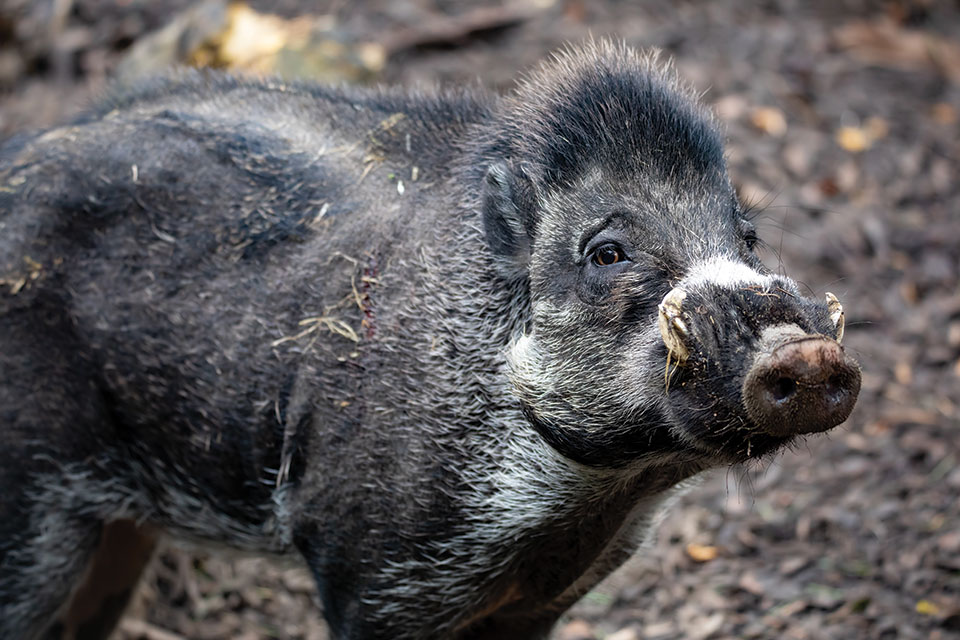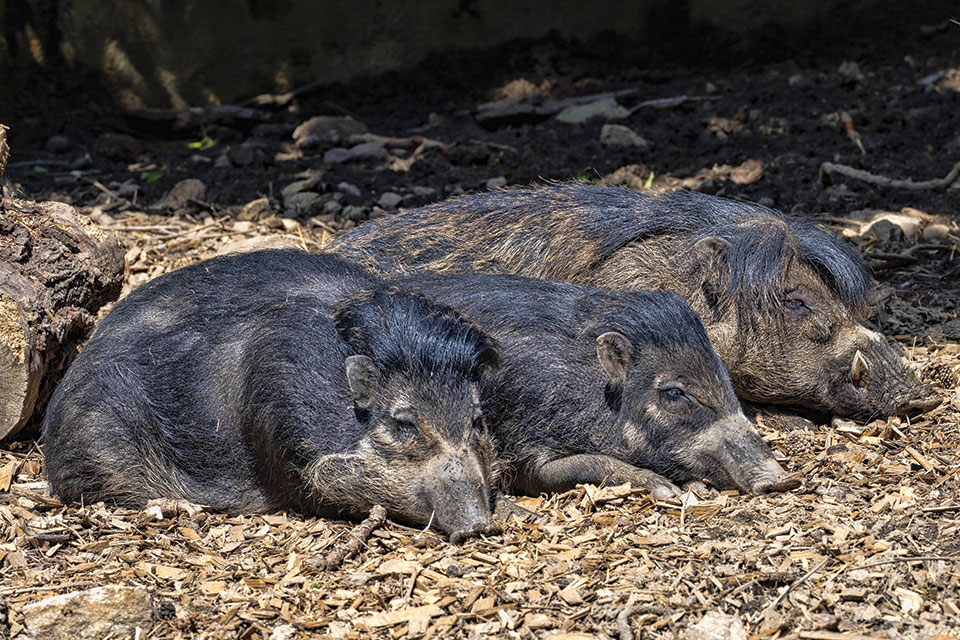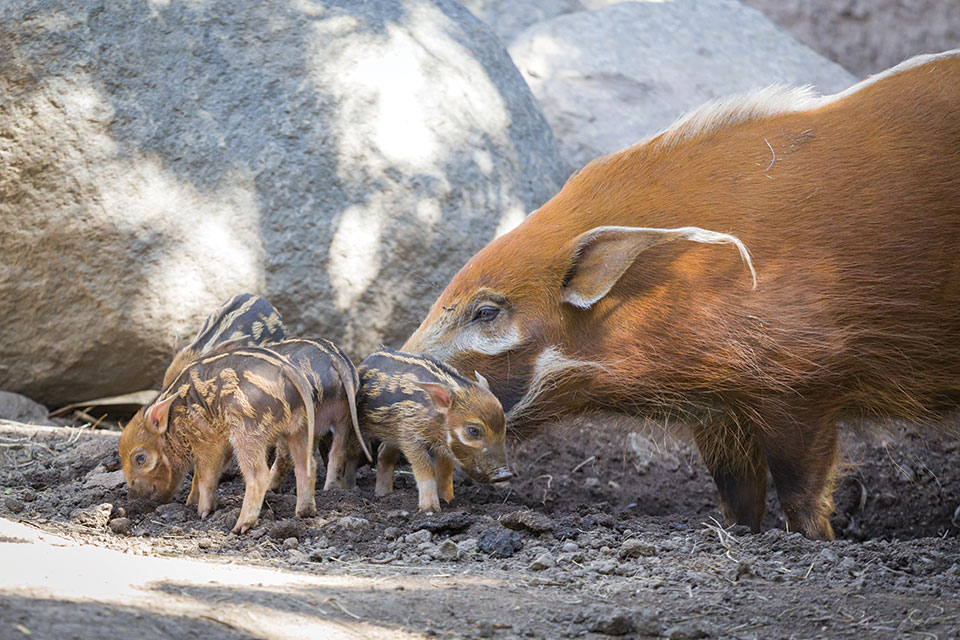
The Visayan warty pig is a critically endangered species in the pig genus. It is endemic to six of the Visayan Islands in the central Philippines. It is known by many names in the region depending on the island and linguistic group, but most variations translate into wild pig.
The Visayan warty pig is critically endangered due to habitat loss and hunting. It is believed to be extinct in four of the islands in its original native range, with only small surviving populations in Negros and Panay. Due to the small numbers of remaining Visayan warty pigs in the wild, little is known of their behaviors or characteristics outside of captivity.
The Visayan warty pig receives its name from the three pairs of fleshy warts present on the visage of the boar. Biologists speculate that the reason for the warts is to assist as a natural defense against the tusks of rival pigs during a fight. The boars also grow stiff spiky hair. Although called a warty pig, facial warts of this species are small and only found in males.
The Visayan warty pig is a dark grey color, and the body is sparsely covered with bristly hairs. In females these bristles are usually dark, while males often have light brown or silvery bristles. There is a tuft of hair in between the ears; in adult males from the island of Panay, this tuft grows into a long mane which runs from the head to the tail, and may hang over the face covering the eyes. Like all pigs, the face is long and ends with a round nasal disc. These pigs are best recognized by the white stripe which runs over the bridge of the nose behind the mouth.


Visayan warty pigs tend to live in groups of four to six. The diet of the pig mainly consists of roots, tubers, and fruits that can be found in the forest. They may also eat cultivated crops. Since approximately 95% of their natural habitat has been cleared by local farmers who cut down the forest to plant crops, the propensity of the pigs to eat cultivated crops has risen dramatically. Because the land that is cleared for farming is often unproductive after a few years, the food sources of the Visayan warty pig are extremely limited, a factor. that has contributed significantly to the pig’s dwindling numbers.
Piglets are usually born in January, February and March during the dry season. Mother pigs usually make a nest in which to give birth and are very protective of their offspring. The gestation period is estimated at 118 days. The number of piglets is three to four per litter. At birth, Visayan warty pigs are light brown in color, with four dark stripes running down the body from head to tail. These stripes fade as the infants grow, and adult coloration is reached at one year. The life span is between ten and fifteen years.
Visayan warty pigs appear to play a major role in dispersing the seeds of some species of plants. The biggest threat to the Visayan warty pig is habitat loss caused by commercial logging and slash-and-burn farming. In total, it is extinct in 98% of its original native range due to loss of forest cover. They are also hunted for food and by farmers who see them as pests since they can damage crops when foraging.
It is unknown how many Visayan warty pigs are in the wild. There are 300 warty pigs living in zoos across the world. The good news is that the Visayan breeds well in captivity, and zoos and other facilities worldwide are raising the species with the goal of reintroducing them into the wild.
If all goes well, an extremely rare species of warty pig with rockstar hair will be running wild once more.

